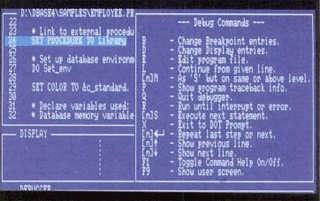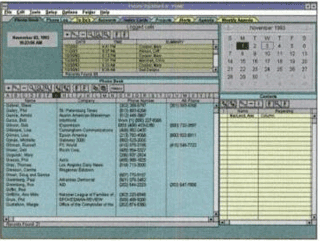When Bad Things Happen to Good Products
Ten major upgrades that went awry, the consumer revolts they prompted, and how the products involved recovered--or didn't.By Harry McCracken | Sunday, December 13, 2009 at 10:46 pm
Technology companies are awfully fond of comparing their work to poetry and art. Unlike most poets and artists, though, techies seem incapable of leaving well enough alone.
In fact, the industry’s whole business model depends on rendering last year’s model obsolete and convincing customers to fork over money for something visibly different. True, that strategy often yields worthy products–but it has also been known to prompt “upgrades” that were new but hardly improved.
Herewith, a look at ten disappointing (and sometimes disastrous) updates to formerly winning hardware, software, and services. No, this list doesn’t include the most legendary cruddy upgrades of them all, Windows Me andWindows Vista. (Covering them would have been like shooting operating systems in a barrel.)
Let’s start with an earlier Microsoft upgrade–one whose story sounds a lot like Vista’s, but which took place a couple of decades earlier.
1. DOS 4.0 (1988)
 The product: Before the vast majority of the world’s computer users ran Microsoft Windows, they used the company’s MS-DOS, the operating system that Microsoft famously based on a product it had bought from a small Seattle software company for $75,000.
The product: Before the vast majority of the world’s computer users ran Microsoft Windows, they used the company’s MS-DOS, the operating system that Microsoft famously based on a product it had bought from a small Seattle software company for $75,000.
The bad things: Like many a lousy update, DOS 4.0–which shipped first in a version from IBM for its PCs–sounded impressive on paper (scroll to page 1 of this link for the story): It broke the 640KB memory limitation, could access hard disks larger than 32MB (woo-hoo!), and added a simple menu-based interface with mouse support. But it was incompatible with many well-known programs and was buggy as all get-out–and some of the bugs produced nasty side effects, such as a tendency to destroy users’ data.
News stories of the time read like modern-day coverage of Windows Vista: “Early DOS 4.0 Users Say ‘Stay Away'”, for instance. As a result, many PC owners clung to DOS 3.3 with the same devotion that they and their computing successors have shown in recent years for Windows XP. (Even a year after DOS 4.0’s release, retailer Egghead Software reported that 3.3 was outselling 4.0 two-to-one.)
The aftermath: By the time Microsoft released a version of the OS for non-IBM PCs, the product’s version name had advanced to DOS 4.01, and most of the original kinks had been ironed out. But the damage to DOS 4.0’s reputation seemed to be irreparable: Competitor DR-DOS went straight to version 5.0 just to avoid any malodorous associations. DOS finally got back on track in 1991, when Microsoft released version 5.0–which was a perfectly pleasing product except for this promotional video.
2. Ashton-Tate dBase IV (1988)
 The product: In the 1980s, the database universe revolved around Ashton-Tate’s dBase. The package inspired a bevy of add-ons and clones; countless companies dedicated themselves to performing dBase development and consulting.
The product: In the 1980s, the database universe revolved around Ashton-Tate’s dBase. The package inspired a bevy of add-ons and clones; countless companies dedicated themselves to performing dBase development and consulting.
The bad things: In 1988, Ashton-Tate released dBase IV, the successor to dBase III Plus. Like many a major upgrade, the new version was sluggish and buggy. On top of those problems, it lacked one key feature dBase devotees craved: the ability to compile stand-alone applications that could run without a copy of dBase installed. Nor did Ashton-Tate dseem particularly interested in improving the product. Two agonizing years limped by before the company found time in its busy schedule to release dBase IV 1.1.
The aftermath: Despite its dominance, dBase faced serious competition: products such as FoxBase and Clipper not only were dBase compatible, but also nimbly stepped in to offer the features that Ashton-Tate had failed to offer. Users defected to them in droves. Though dBase didn’t vanish–actually, it’s still for sale–its market share cratered. In 1991, Ashton-Tate gave up and sold out to Borland; that company that couldn’t figure out how to reverse dBase’s fortunes either.
3. Polaris Packrat 5.0 (1993)
 The product: Back in the late 1980s and early 1990s, if you used a PC to stay organized, there’s a good chance that you used Polaris Software’s PackRat, a popular and powerful personal information manager (PIM) that was the first such product to run in Windows.
The product: Back in the late 1980s and early 1990s, if you used a PC to stay organized, there’s a good chance that you used Polaris Software’s PackRat, a popular and powerful personal information manager (PIM) that was the first such product to run in Windows.
The bad things: When PackRat 5.0 shipped, InfoWorld noticed some bugs (“we crashed”) but still pronounced it a winner in the magazine’s roundup of PIMs. PackRat customers, however, were less tolerant. Many deemed the application unusable, and members on the company’s CompuServe forums seethed with anger (“your senior managers are crooks”).
Polaris’s president claimed that only 20 to 30 unhappy campers were responsible for the online hatefest. But ultimately the company was forced to admit that it had shipped a product that wasn’t ready for prime time.
The aftermath: Polaris moved remarkably slowly to patch up PackRat’s holes, and the company’s once-loyal customer base proved unforgiving. The software’s market share fell from 27 percent in 1993 to less than 10 percent in 1994. Mass layoffs ensued, a merger with telephony company Octus fell through, and Polaris and PackRat faded into obscurity–except as a sobering object lesson for the rest of the software industry.
4. Microsoft Word 6.0 for Mac (1994)
The product: Microsoft and Apple may be the tech world’s most legendary archrivals, but that hasn’t stopped Microsoft from being a major developer of applications for Apple’s computers. It released Word for Mac in 1985–two years after the first version of the word processor appeared for Microsoft’s own MS-DOS–and it sells an updated version of the application to this day as part of Office 2008.
The bad things: Word 5.0 for Mac, which shipped in 1991, had been a well-reviewed hit. But for the next major upgrade, Microsoft decided to focus on creating a Mac version of Word that matched the features of Word for Windows. So it abandoned all the work it had done on the previous Mac edition in favor of a version that was based on Word for Windows. The result? Word 6.0 felt like a bloated, buggy invader from the Windows world–even the keyboard shortcuts had changed. Mac fans went berserk, and version 6.01 didn’t do much to calm them down.
The aftermath: Microsoft learned a lesson. Word 98, version 6.0’s successor, was a strong enough app that Macworld named it and the rest of Office 98 as its Software Product of the Year. “[For] the first time in a long time,” the magazine enthused, “Microsoft seems to actually understand what the elegance of the Macintosh is all about.” The company also split Mac development off into its own group, the Mac Business Unit, shielding it from the unhealthy, Windows-centric influence of the rest of the Office team.
1 2 NEXT PAGE»
8 Comments
Read more:













December 14th, 2009 at 6:20 am
Shame Windows ME and Vista didn’t make it to the article. Would have loved to hear your thoughts. But thanks for mentioning Hotmail. Actually, I pretty much stopped using it after Microsoft changed it. But same goes to Windows Live Messenger (MSN) – they made so many changes that it because annoying to use and I had to pretty much give it up.
December 14th, 2009 at 10:45 am
Sim City Societies: Sim City had always been a BRILLIANT game, time and time again (from the very first version to the SimCity 4 and it’s rush hour expansion) But EA decided it was time to dumb the whole game down to make it more ‘accesable’… reault: Fans of the series (including me) didn’t buy the game, and new users (at which EA targetted the changed concept) didn’t even care because it was kinda boring and easy.
I really hope there comes a SimCity 5 🙁 Still playing SimCity 4 Rush Hour here, but since it’s buggy on multi-core systems, I REALLY want an upgrade :'(
December 14th, 2009 at 11:13 am
Wow. The DOS-5 video is amazing. I love it. What an artifact. Where on earth did someone find that, I wonder.
December 14th, 2009 at 12:37 pm
I have to take some issue with the inclusion of iMovie ’08. Yes, people like Pogue who were experienced users of the previous versions were baffled. But for me, every time I’d tried to do something in the previous version (except when I had to, for an article I was editing), I soon said to hell with it. It was confusing and intimidating and just not fun. iMovie ’08, by contrast, was intuitive and straightforward and, well, fun. ’06 might have let serious video editors do more, but ’08 let the average user string together movie clips a lot easier. And really, if you’re making a home movie, is it more important to have frame-accurate control over in and out points, or just to be able to say “okay, this clip first, then this one, then this one”? I always wondered how many new iMovie users ’08 created–all we heard was from disgruntled ’06 users.
December 14th, 2009 at 12:42 pm
@Jake Good point, Jake. Does seems like Apple did a pretty good job of making both old pros and newbies happy with the ’09 version though…
December 18th, 2009 at 10:17 am
Another great article Harry. Entertaining and with good lessons of what to avoid. I sent links on this two two separate people.
December 26th, 2009 at 6:13 am
The company I used to work for bought a pallet jack from Circuit City; it was the most high-tech purchase that company ever made.
December 27th, 2009 at 7:27 am
@Backlight: I remember typing that actually…
I’ll agree with Bouke on the Simcity point. I played Societies a whole 30 minutes before becoming unimpressed.
I found the workflow in iMovie ’08 to be ridiculously unintuitive.